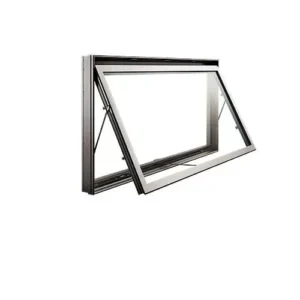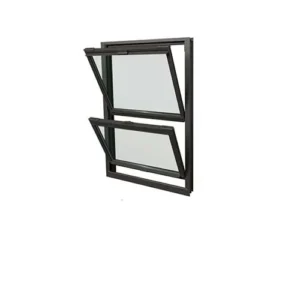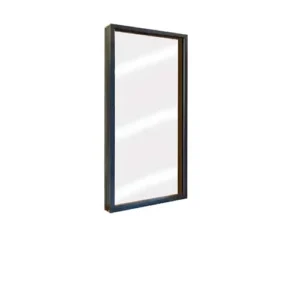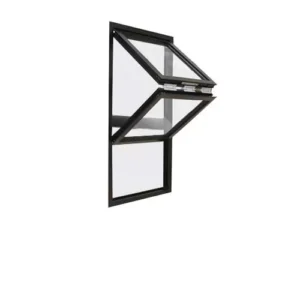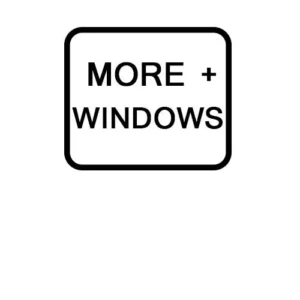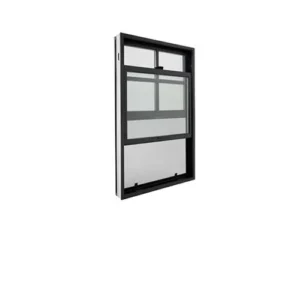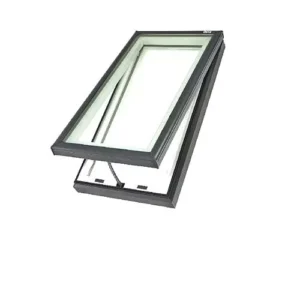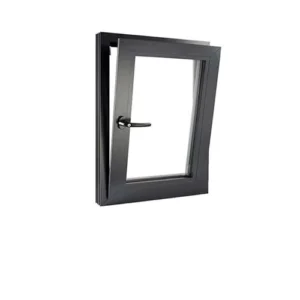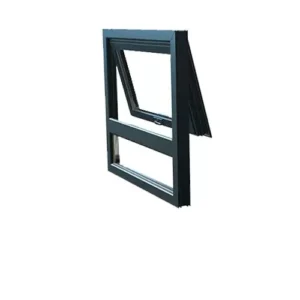ABOUT aluminum casement window FAQ
Yes, aluminum casement windows can withstand typhoons and hurricanes, but it depends on the specific design and quality of the windows. High-quality aluminum casement windows, particularly those built with reinforced frames and impact-resistant glass, can provide significant protection against strong winds and flying debris associated with typhoons and hurricanes.
However, not all aluminum windows are made with hurricane resistance in mind. To ensure they can withstand severe weather, look for windows that meet specific building codes and standards for hurricane or storm resistance, such as those rated by the American Architectural Manufacturers Association (AAMA) or the Miami-Dade County impact-resistant standards.
Casement windows, while offering excellent ventilation and security, do have some downsides. First, they tend to be more expensive than other window types due to their complexity and high-quality materials. Second, their cranks and hinges may require regular maintenance, and over time, these parts could wear out or become difficult to operate. Additionally, casement windows open outward, which can block walkways or patios, making them impractical in certain areas. Lastly, their exposed hinges can be vulnerable to weathering if not properly maintained.
The price of aluminum windows can vary significantly based on factors like size, brand, features, and installation complexity. On average, aluminum windows can cost anywhere from $300 to $1,200 per window. Basic, standard-sized windows typically fall on the lower end of this price range, while custom or impact-resistant aluminum windows can cost more. Labor costs for installation can add to the total price, often ranging from $100 to $300 per window, depending on your location and the window’s specifications.
According to your needs, we will provide the latest product quotation, welcome to contact us for inquiry .
The best material for casement windows largely depends on your priorities. Aluminum is a popular choice due to its durability, low maintenance requirements, and sleek appearance. It resists corrosion and is energy-efficient, especially when insulated. However, fiberglass is another excellent choice, offering superior energy efficiency and a longer lifespan than aluminum. It is particularly well-suited for extreme weather conditions. Wood is a traditional option that provides an attractive, classic look, but it requires more maintenance and is less durable in areas with high moisture levels. Each material has its pros and cons, so consider your specific needs before deciding.
A casement window is a type of window that opens outward on a hinge, usually to the side, by using a crank handle or a push-out mechanism. This design provides excellent ventilation, as the entire window opens outward. In contrast, a regular window, such as a double-hung or sliding window, opens either vertically (up and down) or horizontally (side to side) without cranking. Casement windows also tend to be more energy-efficient and secure due to the tight seal they create when closed, while regular windows might not offer the same level of air-tightness or security.
Casement windows tend to be more expensive due to their complex design and the high-quality materials used in their construction. The crank mechanism, hinges, and weatherstripping components require precision engineering, which increases production costs. Additionally, casement windows often use premium glass types, such as impact-resistant or energy-efficient glass, which also adds to the price. Customization, such as adding decorative grids or choosing higher-end materials like wood or fiberglass, can further increase the overall cost. Installation costs for casement windows can also be higher due to the labor-intensive nature of the installation.
One issue to consider when using casement windows is the space needed for them to open. Since casement windows open outward, they may obstruct pathways, patios, or other areas around the window, which could be a problem in tight spaces. Additionally, because of their outward-opening design, casement windows are more susceptible to being damaged by strong winds in some regions. Another consideration is the maintenance of the cranks, hinges, and weatherstripping, as these components can wear down over time, requiring repairs or replacements. It’s also important to ensure that the windows are securely locked when closed to prevent break-ins.
While casement windows are generally more secure than other types of windows due to their locking mechanisms, they are not entirely invulnerable to break-ins. If the window is not properly locked or the lock mechanism becomes worn, it can be relatively easy to force open. Additionally, if the window uses standard glass instead of impact-resistant or laminated glass, a burglar could break the glass and gain entry. To improve security, ensure that casement windows are equipped with high-quality locks, impact-resistant glass, and consider additional security measures like window sensors or bars.
To burglar-proof casement windows, start by installing high-quality locks that are difficult to tamper with. Upgrading to impact-resistant or laminated glass will make the window more difficult to break. Reinforce the window frame and hinges with stronger materials to prevent them from being easily pried open. You could also install window bars or grilles, though this may not be ideal for aesthetics. Additionally, consider adding security film to the glass, which makes it harder to break and adds an extra layer of protection. Motion sensors or security cameras around windows can also provide additional security. or aluminum options.
Typically, casement windows require a crank mechanism to open and close. The crank allows the window to swing outward smoothly and securely. However, if the crank mechanism is damaged or broken, it can be difficult or impossible to open the window using the crank. In some cases, a manual override or repair may be necessary to restore the window’s function. If the crank is entirely missing, replacing it or using an alternative opening mechanism might be required. Always ensure that the window’s operation is smooth and the crank is well-maintained for easy use.
Casement windows can leak if the seals around the window frame or sash have deteriorated due to age or weather exposure. The seals are meant to prevent water and air from entering, but over time, they may lose their effectiveness. Leaks can also occur if the window is not properly installed, leaving gaps between the window and the frame. Another common cause of leaks is if the window is exposed to excessive pressure from strong winds or heavy rain, especially if the window’s locking mechanism isn’t fully engaged. Regular maintenance and timely repairs to seals, hinges, and weatherstripping can prevent or minimize leaks.

